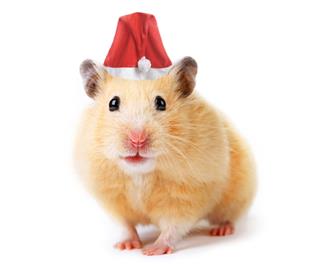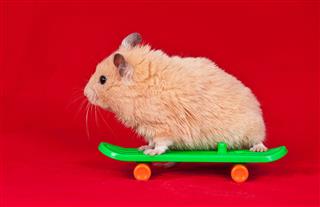
Cute, cuddly, loving and adorable are all the characteristic features which teddy bear hamsters carry with them…
Teddy bear hamsters cost more than regular hamsters and they are a popular variety of Syrian hamsters; sometimes also referred to as Golden hamsters due to their original wild golden coloring. These little animals got their name from their characteristic coloration, long soft hair and colored belly. These low-maintenance critters, on an average, have an expected life span of 2-3 years and can grow up to 5-6 inches. Females reach their reproductive stage at the age of 6 weeks and males get sexually matured slightly sooner.
It does not take time for the hamsters to get accustomed to their new surroundings. They prefer being solitary and are territorial. So if you plan to give to bring two hamsters home, then better get one cage for each of them. These hamsters can be found in pet shops under names such as long-haired hamsters, fancy hamsters and angora hamsters.
Basic Facts
# These animals are nocturnal by nature, and are active at dusk and night. So it is better to keep these animals in a room where nobody sleeps, as they tend to be noisy while playing, eating and walking around their cages. It is best to go about buying a hamster at day break, as then you would have an idea how active your hamster is.
# Before bringing the animal home, look for possible signs of any kind of preexisting illness(s). A healthy one would display a smooth and shining coat, bright eyes, dry nose and clean anus. An ‘almost’ symmetrical body also signifies good health. A hamster which is suffering from some disease, would show symptoms such as bare spots in the fur or exposed skin, sneezing or nasal discharge, dry or inflamed eye, longer teeth or nails, limping or reddened skin. The animal would look dull and have sunken flakes, along with a dirty anus. It is better not to bring home a hamster showing such symptoms. However, if you can inform the dealer about it, then the animal can be treated as soon as possible.
# It is wise to choose a hamster which is 3-4 weeks old. As obvious it is, animals, when they are young, are easier to hand tame than when they are older. When they get introduced to a new surrounding, take some time to adjust. So, provide your hamster with some of the nest material from its old cage. This will help the animal to get accustomed to its new home.
# In order to help the new member of your family to ‘feel at home’, you can cover the cage with a light cloth for the first few days. This will buy some time for the hamster to investigate its new home. The old nest materials that you brought from its old cage should be left as it is, as its scent will help the animal to feel at home sooner. Friends and neighbors may give you frequent visits as they would be inquisitive and excited about meeting your cuddly pet. However, make a request to postpone their visits, as too many faces may make your pet uneasy.
Caring Tips for Teddy Bear Hamsters
# The caring part for this animal is an easy job; low on maintenance, and low on feeding and shelter. The shelter that you provide to your hamster must have enough space for the animal to move around and play. The cage should not be kept under direct sunlight and the place should be well-ventilated. Plenty of food and water is needed to keep your hamster healthy and free from any illnesses. Grain, seeds, fruits, vegetables and insects are the main delicacies of the animal in the wild. In captivity, however, it can be fed with dried hamster mix with small amount of vegetables and occasional fruits. It is important to remember that too much of greens can cause the hamster to suffer from diarrhea. Fatty foods like sweets, chocolates, etc. do not do good for the hamster’s health, so it is necessary to avoid such kinds of foods. Insects like small crickets or mealworms from the pet store, can also be a good variety in its diet.
# Hamsters are among those animals which have teeth that grow continuously; it is known as malocclusion. If the growth is continuous, it would make it difficult for the pet to chew food, which ultimately will lead to starvation. So, in order for them to maintain a good length of their teeth, they always need to chew and gnaw at something. There are a variety of inexpensive chews which can be bought from any pet store.
# Like cats, these hamsters do not require baths to maintain healthy hygiene. It is said that, bathing may remove the natural oils in their body and may result in chilling, illness or in some cases, even death. These hamsters roll themselves in sand to keep their fur from getting too oily. They can be provided with chinchilla sand in their cage, so that they can ‘bathe’ themselves safely and whenever they feel like.
# Avoid using cedar or pine shavings as bedding for your hamster. Such materials tend to irritate the mucous membranes of the eyes, nose, throats and lungs. Recycled paper, aspen shavings, hay and plain paper towels make great and safe bedding for your pet.
Like other pets, teddy bear hamsters also face health issues. So it is extremely important that you take proper and regular care of your pet and call for medical help in case it shows any abnormal symptoms. Diarrhea, mite infestation and overgrown teeth are the common problems that your pet may suffer from. So once you are aware of all the requirements your cute little hamster would need after it is brought to your home, think of a nice name for it and enjoy the company of your new pet!

